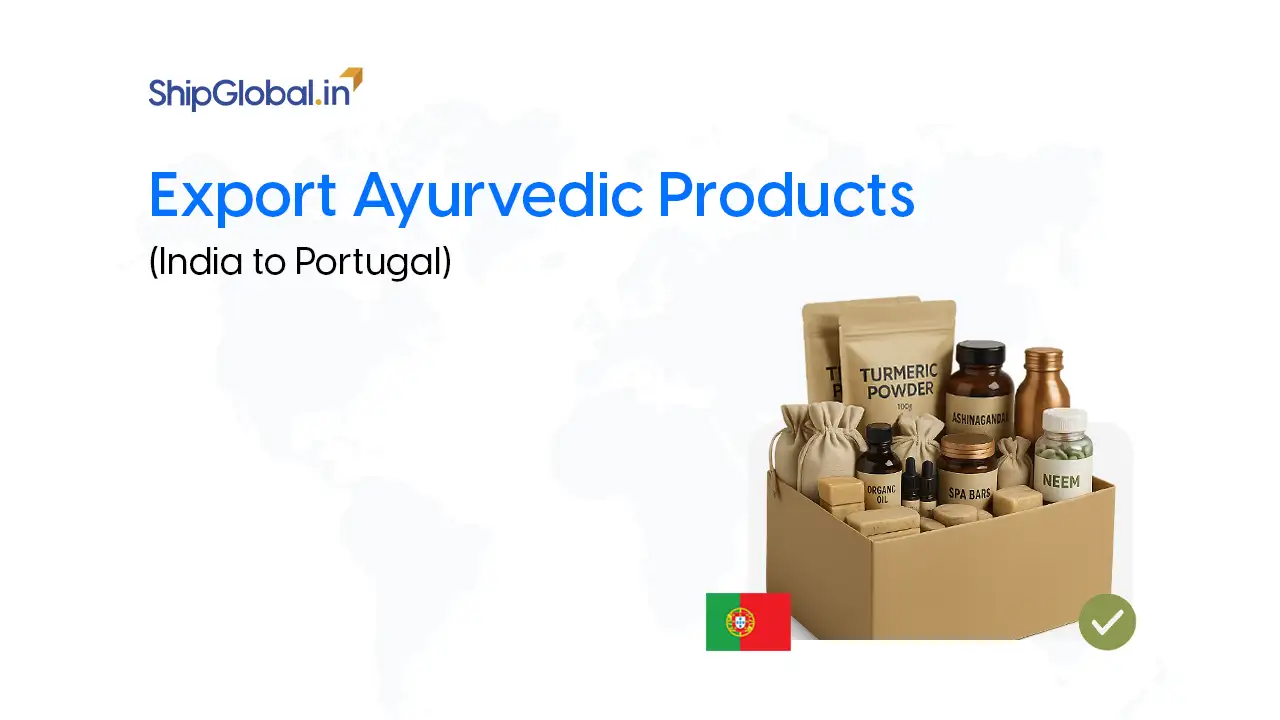When it comes to international shipping, selecting the correct Incoterm can greatly impact cost, responsibility, and risk. Among the 11 Incoterms defined by the International Chamber of Commerce (ICC), two of the most debated in global trade are DDU (Delivered Duty Unpaid) and DDP (Delivered Duty Paid). Choosing between DDU vs DDP is not just about preference, it affects customs clearance, cost transparency, and international trade compliance.
This blog delves into the differences between DDU and DDP, exploring the buyer/seller responsibilities, import taxes, shipping agreements, and how each term influences risk management and operational transparency.
What is DDU (Delivered Duty Unpaid)
Delivered Duty Unpaid (DDU) is an Incoterm under which the seller is responsible for delivering goods to the destination country, but not for paying import duties, taxes, or customs clearance. These responsibilities fall to the buyer.
It is important to note that DDU is often referred to as DAP – Delivered at Place.
Seller’s responsibilities under DDU:
- Export documentation and clearance
- Transportation to the destination country
- Delivery to a pre-agreed location
Buyer’s responsibilities under DDU:
- Import documentation and customs clearance
- Payment of duties and taxes
- Handling any delays or penalties at customs
DDU gives the seller less financial responsibility and reduces the complexity of dealing with foreign customs systems.
Note: DDU (Delivered Duty Unpaid) is no longer an official Incoterm. It was replaced by DAP (Delivered at Place) in 2010 by the International Chamber of Commerce, however, it’s still widely used in global trade.
What is DDP (Delivered Duty Paid)
Delivered Duty Paid (DDP) is a more seller-intensive Incoterm. The seller assumes full responsibility, including payment of all import taxes and duties. This ensures that goods reach the final destination with no further obligations for the buyer.
Seller’s responsibilities under DDP:
- Export and import customs clearance
- Payment of all duties, tariffs, and taxes
- Transportation and final delivery
Buyer’s responsibilities under DDP:
- Accept delivery of goods (along with proper verification)
- Notification of discrepancies (to be communicated within an agreed time period)
This model provides a seamless experience for buyers, particularly helpful in eCommerce and B2C deliveries.
DDU vs DDP: The Key Differences Explained
Among the 11 Incoterms, DDU and DDP specifically address import duties and taxes, making them highly relevant in international trade compliance.
Here’s a simple breakdown to help you compare DDU vs DDP side by side:
- Import Taxes and Duties
DDU: These are paid by the buyer upon arrival of goods in their country. It may result in unexpected charges.
DDP: The seller includes taxes and duties in the sale price, providing a clearer cost expectation.
- Customs Clearance Responsibilities
DDU: The buyer is responsible for clearing the goods through customs, paying duties, and ensuring compliance with local import regulations.
DDP: The seller must handle both export and import customs processes, making it a seamless experience for the buyer.
DDU vs DDP: A Quick Comparison Table
| Criteria | DDU (Delivered Duty Unpaid) | DDP (Delivered Duty Paid) |
|---|---|---|
| Import Duties and Taxes | Paid by Buyer | Paid by Seller |
| Customs Clearance | Handled by Buyer | Handled by Seller |
| Cost Transparency | Less predictable due to varying import costs | High transparency with all-inclusive pricing |
| Shipping Responsibility | Shared; seller until destination, then buyer | Entirely Seller |
| Risk Management | Buyer bears more risk at import stage | Seller bears full risk until final delivery |
| Shipping Insurance | Buyer (once goods arrive at destination country) | Seller |
| Transportation | Buyer (once goods arrive at destination country) | Seller |
| Ideal For | Experienced B2B buyers managing their own logistics | B2C, eCommerce, or buyers seeking hassle-free delivery |
When to Use DDU
DDU might be the better choice if:
- You want to reduce upfront shipping costs: Since the buyer pays duties and taxes, your initial costs are lower.
- You’re shipping to experienced buyers: If your buyers are familiar with import processes, they’ll know how to handle customs.
- You want to avoid getting stuck with unexpected fees: Import regulations can vary wildly between countries. With DDU, the buyer handles that complexity.
However, there are some downsides. Buyers might be annoyed if they’re suddenly hit with duties or customs fees. Worse, they might reject the shipment, causing returns and extra costs for you.
When to Use DDP
DDP might be the better choice if:
- You want to offer a better customer experience: Buyers love it when everything’s taken care of—they just want a simple, all-in-one deal with zero hassle. Moreover, this helps them know the total cost upfront—no last-minute surprises.
- You don’t want to depend on the buyer to get things done: Handling customs yourself when shipping to countries with strict import rules means you are aware of each and every aspect. The lower dependence on the buyer leads to fewer delays and smoother deliveries.
- You want more control over the shipping process: Since you’re dealing with customs directly, you can ensure everything’s handled properly and safely.
That said, DDP does come with its own challenges. You’ll need to know local customs rules, arrange for local tax payments, and work with brokers or logistics companies. It’s more complex, but the payoff is often worth it.
Buyer Preferences and Market Trends
Imagine: You’re based in India and sell products online. Your customers come from different regions like France, Germany, and Spain. If you use DDU, your customers might receive a message like, “Your package is at customs. Please pay €25 to receive it.”
Not ideal, right?
But if you offer DDP, the customer pays everything upfront on your website, and their package arrives at the doorstep—no extra steps needed. In this case, DDP is a clear winner, especially for customer satisfaction.
Modern buyers, particularly in eCommerce and B2C sectors, increasingly prefer DDP shipping. This preference is driven by:
- Expectation of no surprise charges
- Demand for faster, smoother delivery, and
- Preference for all-in-one checkout prices
In contrast, wholesale or industrial buyers in B2B often favour DDU to control their import operations and costs. For example, consider an Indian apparel exporter sending a bulk shipment to Germany.
Under DDU, the German buyer arranges customs clearance and pays VAT. Since the buyer is experienced, he prefers handling customs process on his own to manage costs. He might even have a special tax arrangement in place. Here, DDU makes sense, as the buyer is equipped to handle the backend work.
In ecommerce, choosing between DDP (Delivered Duty Paid) and DDU (Delivered Duty Unpaid) impacts delivery success. With DDU, buyers face surprise customs fees, causing delays, refusals, or abandoned shipments. DDP avoids this by shifting all duties and compliance to the seller, but mistakes like incorrect paperwork or underestimated tariffs can lead to fines or losses. Common shipping errors in ecommerce include mislabeling, missing invoices, and failing to research destination regulations. Choosing the right method and ensuring accuracy is critical for customer satisfaction and profitability.
Think of DDU as “we ship it, you sort it out at your end,” while DDP is more like “we’ve got everything covered—you just sign and receive.”
Risks Involved in DDU and DDP
Both methods have their risks—just different ones.
With DDU, the biggest risk is on the buyer’s side. They might face unexpected costs or delays. And if they refuse to pay duties, the shipment could be returned or even destroyed. That’s a bad experience for everyone.
Risks in DDU (Delivered Duty Unpaid)
1. Financial Uncertainty for the Buyer
Buyers may be unaware of the total landed cost until the shipment arrives. Customs duties and taxes can vary based on:
- Product classification (HS codes)
- Country-specific tariffs
- Unexpected surcharges
If the buyer is surprised by high fees, they may refuse delivery, causing shipment delays or returns.
2. Delivery Delays at Customs
Since the buyer is responsible for customs clearance, any inaction or delay on their part—such as missing documents or failure to pay duties promptly—can result in:
- Storage fees at customs warehouses
- Late delivery penalties
- Damage or degradation of perishable goods
3. Risk of Abandonment
If the buyer is unwilling or unable to handle the customs formalities or pay the fees:
- The shipment may be held indefinitely
- It may be returned to the seller (at additional cost)
- In worst-case scenarios, customs may destroy the goods
This leads to financial loss for the seller and dissatisfaction for the buyer.
4. Limited Seller Control
Once the goods arrive at the destination country, the seller has no control over the final leg of the delivery. This can hurt customer experience, especially in eCommerce scenarios where seamless delivery is expected.
With DDP, the risk shifts to the seller. You could be surprised by higher-than-expected customs fees or delays due to incorrect paperwork. It also takes more effort to stay updated on the import rules of each country you’re shipping to.
Risks in DDP (Delivered Duty Paid)
1. Increased Responsibility for the Seller
Under DDP, the seller is responsible for navigating the often complex and varied import regulations in the buyer’s country. This includes:
- Knowing and applying the correct tariff codes
- Keeping up with regulatory changes
- Complying with import restrictions and documentation requirements
Mistakes can result in fines or shipment delays.
2. Unexpected Customs Costs
Even with preparation, customs duties, VAT, and other fees can change or be miscalculated. If the seller underestimates these, they absorb the extra cost. Factors include:
- Country-specific duty changes
- Incorrect valuation of goods
- Changes in free trade agreements or preferential tariffs
3. Delays Due to Documentation Issues
Any mistake in customs paperwork (such as incorrect commercial invoices or certificates of origin) can cause customs clearance delays. Since the seller is accountable, they must resolve these quickly—sometimes from afar, in an unfamiliar regulatory environment.
4. Cash Flow and Administrative Overhead
- The seller must often prepay duties and taxes, which may not be reimbursed until later.
- Managing DDP shipments adds administrative work and increases the need for local customs brokers or logistics partners, driving up operational costs.
Smart Tips for eCommerce Sellers Using DDU and DDP
If you’re running an e-commerce store that ships globally, you must get familiar with Incoterms to build a strong shipping strategy. And let’s be honest, how you handle this can make or break a customer’s experience.
Here are some easy tips to help you decide how to use DDU or DDP to keep your buyers happy.
1. Watch Out for Customs Rule Changes
Every country has its own customs rules—and they can change anytime. If you’re using DDU, your customer will be the one dealing with taxes and customs when the package arrives. If they get hit with unexpected charges, they might not be too happy.
So, here’s the deal: if those extra steps don’t bother your customer, DDU could be fine. But if your brand is all about making things smooth and simple, DDP might be a better choice, even if it costs you a bit more.
2. Know About De Minimis (The Tax-Free Limit)
There’s a thing called a “de minimis” rate, which refers to the amount you can ship into a country without paying import tax. If your product costs more than that limit, taxes will apply.
For example, if the limit is $100 and your product is $120, your customer might have to pay extra at delivery—especially under DDU. Knowing this can help you price your products smartly or decide whether to offer DDP and pay the taxes upfront.
3. Communicate Clearly with Buyers and Be Upfront About Extra Costs
Whichever method you choose—DDU or DDP—make sure your customers know what to expect.
- If you’re using DDU, explain clearly that duties and taxes are not included in the price and must be paid upon arrival.
- If you’re offering DDP, highlight that all charges are covered and the buyer won’t face any surprises.
Being honest about extra costs builds trust—even if it means customers pay a little more. Transparent communication not only earns trust but also reduces returns and keeps your customer support team sane.
4. Learn the Basics of Incoterms
Okay, we know “Incoterms” sounds like a boring word from a business textbook. But trust us, learning a few of them like Delivery Duty Unpaid and Delivery Duty Paid can make your shipping smoother and your customer experience way better.
It helps you avoid delays, keep things legal, and make smarter decisions as your business grows.
Pro Tip: Always ensure your shipping contracts mention the specific version of Incoterms being used, such as Incoterms 2020. Why? Because the ICC periodically updates these terms. This will help you prevent misinterpretation or legal disputes.
How Freight Forwarders Simplify DDU vs DDP Shipping
Freight forwarders and customs brokers play a key role in managing:
- Documentation and compliance
- Calculating accurate import taxes
- Coordinating with local customs agents
Whether you opt for DDU or DDP, partnering with a reliable logistics company ensures smoother execution and fewer risks. A knowledgeable global carrier partner makes it easier to navigate customs regulations and choose the best trade term based on your business needs.
Final Thoughts
Choosing the right Incoterm DDU or DDP can significantly influence your global shipping success. While DDU offers flexibility and reduced responsibilities for sellers, it may create uncertainty and extra cost for buyers. On the other hand, DDP provides a complete solution but increases the seller’s burden of compliance, taxes, and logistics.
As global trade evolves and customer expectations shift toward transparency and convenience, DDP is increasingly preferred in consumer-facing industries, especially online retail and eCommerce. However, DDU remains a powerful option for B2B operations, where buyers prefer to maintain control over import procedures.
Making an informed decision ensures not only successful transactions but also long-term trade relationships and market credibility.
Frequently Asked Questions on DDU vs DDP
DDU (Delivered Duty Unpaid): An Incoterm under which the seller delivers the goods to the destination country, but the buyer is responsible for paying import duties, taxes, and handling customs clearance upon arrival.
DDP (Delivered Duty Paid): Under this Incoterm, the seller takes full responsibility for all shipping costs. This includes import duties, taxes, and customs clearance, ensuring the buyer receives the goods without any additional charges.
The main difference between DDU and DDP is who pays for the import duties and taxes. With DDU (Delivered Duty Unpaid), the buyer is responsible for these charges. With DDP (Delivered Duty Paid), the seller pays all duties and taxes before delivery.
DDP is generally better for e-commerce businesses because it offers a smoother customer experience. Buyers receive their products without having to deal with customs or unexpected fees.
Yes, DDP usually costs more for the seller because it includes duties, taxes, and customs clearance fees. However, it can reduce returns and improve customer satisfaction, which often balances out the cost.
Yes, some businesses give buyers a choice at checkout—DDP for convenience, and DDU for a lower upfront cost. Just be sure to explain the differences clearly.
If a buyer refuses to pay duties under DDU, the package might be returned, destroyed, or held at customs. This can lead to extra costs or delays for the seller.
You can use tools like HS codes, import duty calculators, or partner with a freight forwarder or customs broker to estimate charges based on the destination country and product type.
Not always, but DDP often leads to faster delivery because customs clearance is handled before the package arrives. DDU shipments may be delayed if the buyer takes time to pay duties.








